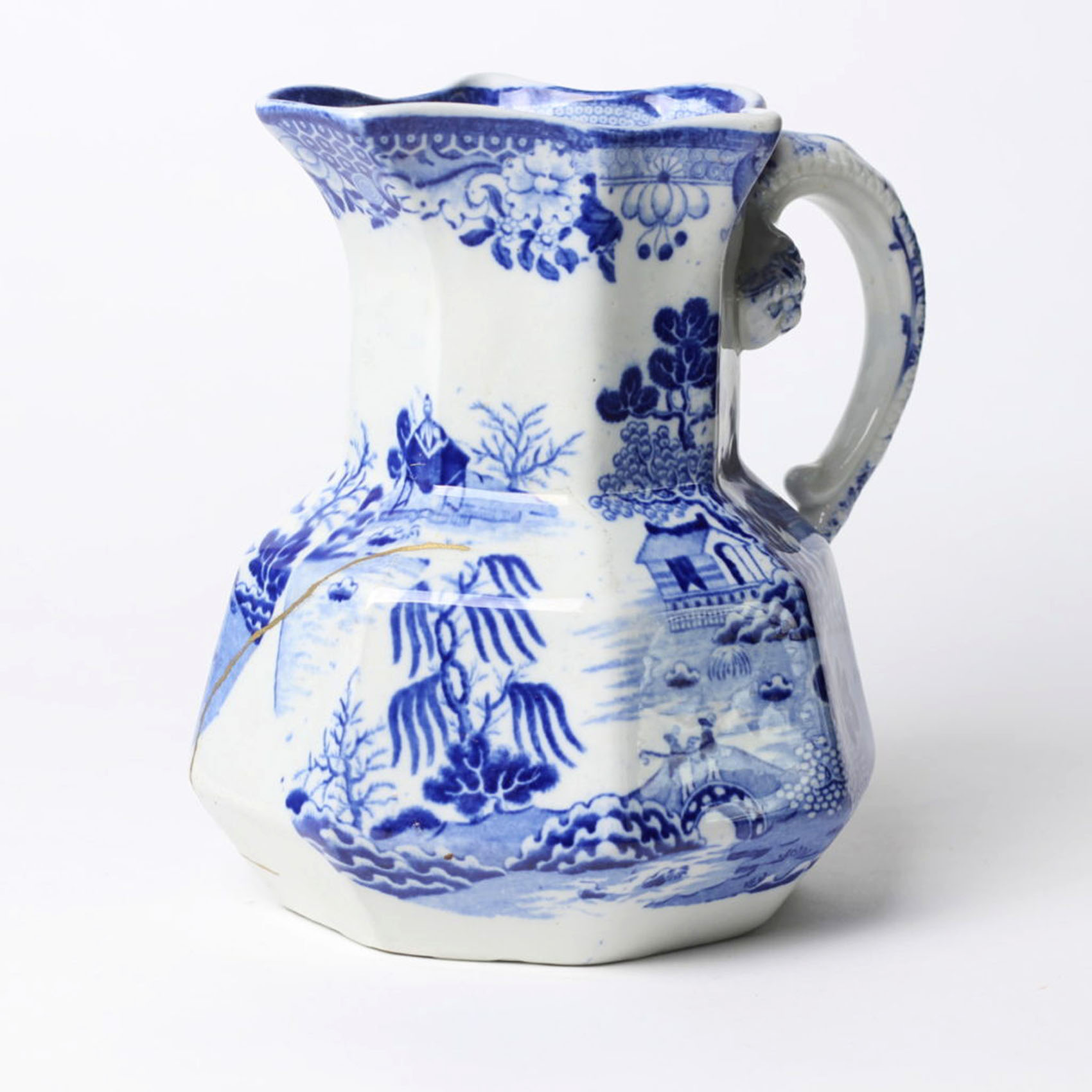
Are you familiar with the Japanese art of Kintsugi? Directly translating to “golden joinery” (and sometimes called Kintsukuroi, or “golden repair”), Kintsugi is the method of repairing cracked or broken pottery by fusing together the pieces with liquid metal—often gold. If you Google it, articles refer to it as “embracing damage” or “the art of precious scars.”
How apropos.
I was familiar with the look and feel of this style of pottery, but less familiar with the philosophy behind it, and I kind of love it! As this feature explains, Kintsugi is “a way to not merely fix a broken object, but to transform it into something beautiful.”
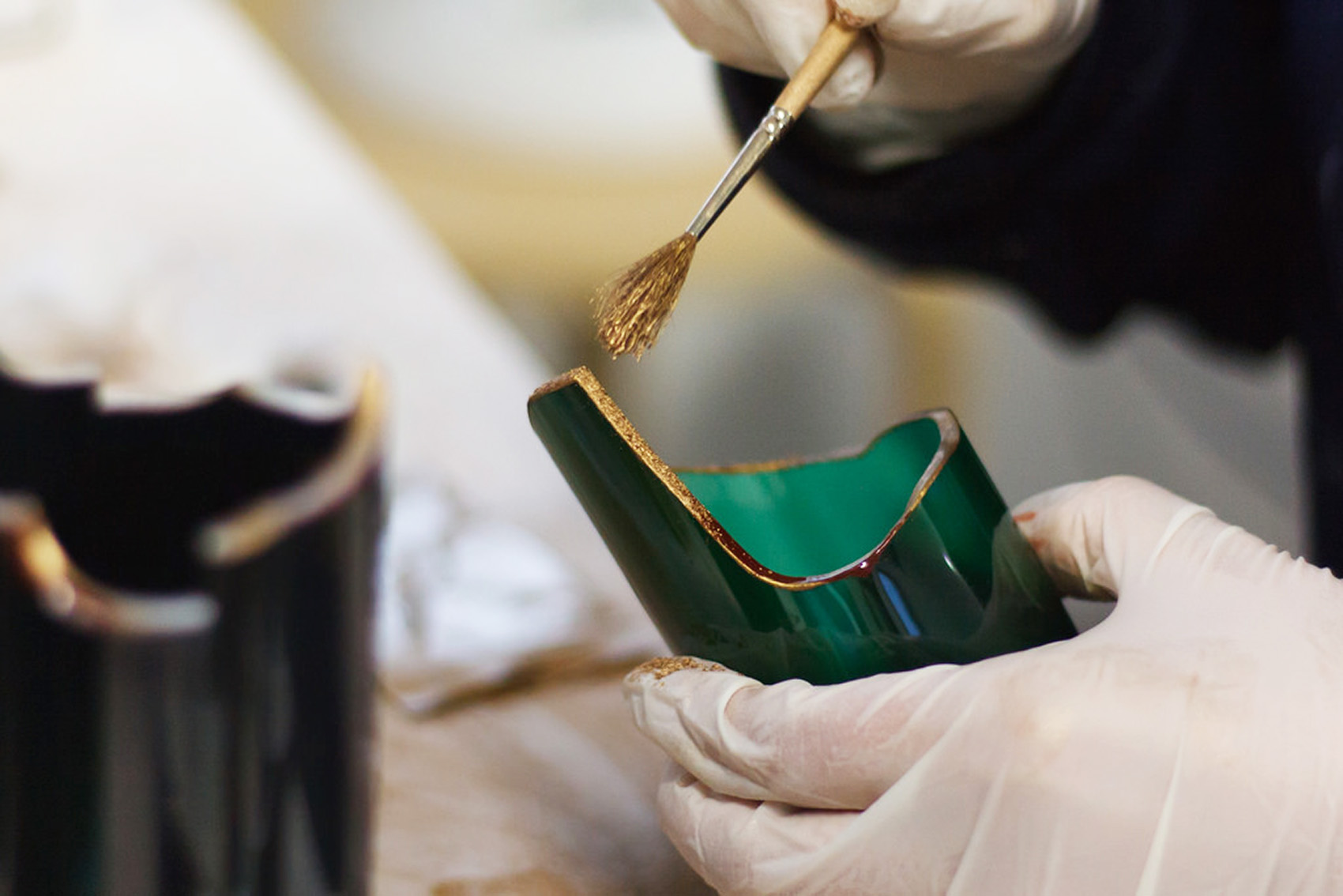
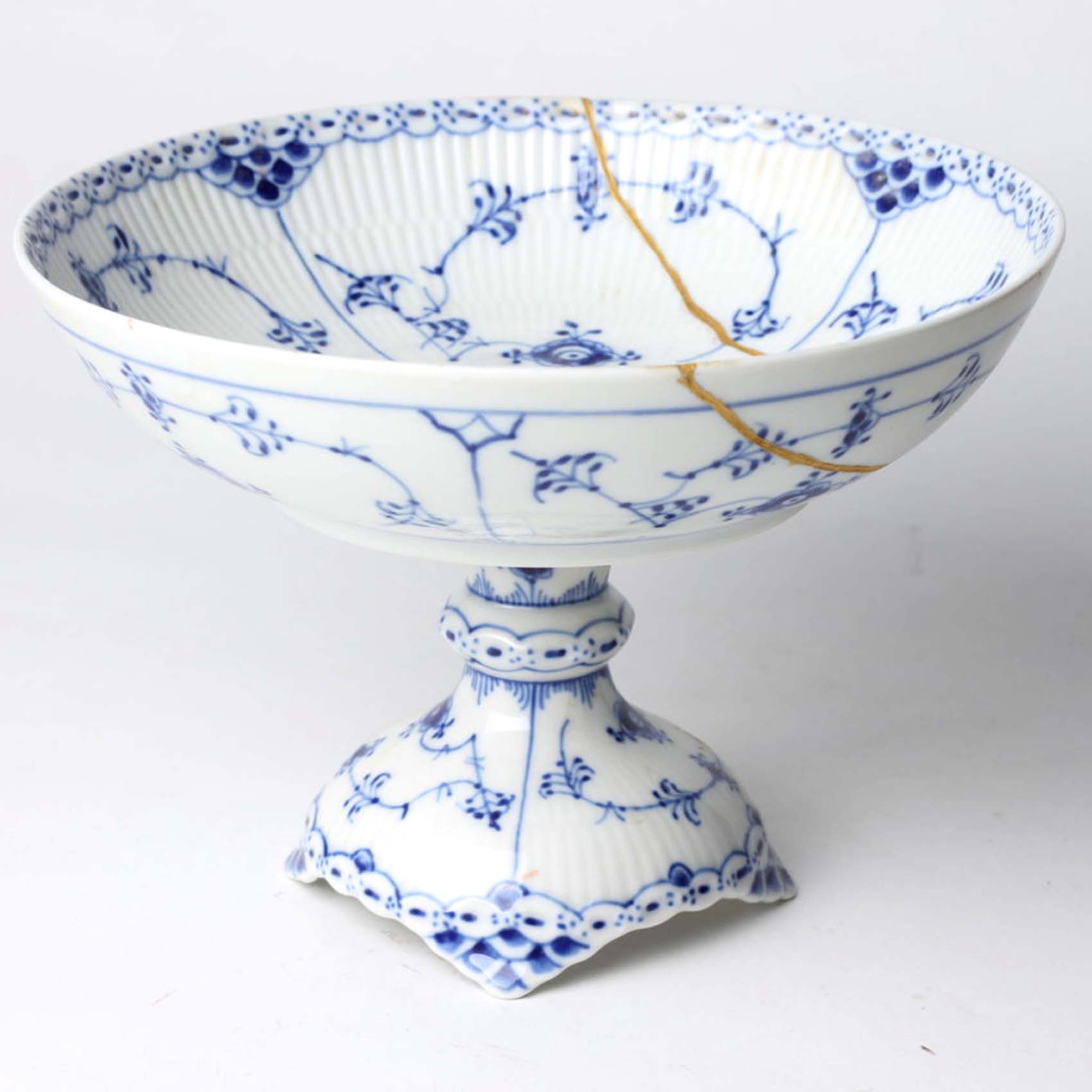
Reminders of the art form seem to be popping up in my life a lot lately, most frequently on (get this!) Facebook. I’ve long admired ceramicist Reiko Kaneko (you probably remember her popular Lip Tease mugs from a few years back), and recently, she’s been advertising her new mail-in Kintsugi repair service. One day, I clicked through to see examples of her “fixes,” and loved everything I saw. It was almost enough to make me want to shatter one of the blue and white ceramic pieces I collect, just to see how it’d be repaired. Ok, maybe not shatter…but there’s something so beautiful and striking about the shimmery gold veining its way through these pieces, that I’m tempted to at least put a small crack in one of mine!

If you have any broken pieces lying around (of the ceramic variety; the spirit requires a different type of treatment), you can take photos of your item and send it to the Reiko Kaneko team. They’ll provide you with a quote to repair it with Kintsugi, inclusive of options for varying gold alloys (which dramatically impact the price, and food safety of your item). Wanna try and DIY it yourself? I did find this home Kintsugi kit, though the finished seams weren’t nearly as elegant.
Meanwhile, if you love the look and feel of Kintsugi but are short on broken pieces at the moment, you can find examples of it for sale on places like Etsy, Chairish, and 1st Dibs (but $$$$$). Some retailers even sell full sets of Kintsugi-inspired dinner sets, but something about that feels like it maybe defeats the purpose? If you’re in the market, I’ve linked some pretty examples of it below! Don’t forget—prices in the hundreds likely indicate the repair material is real gold, and with any luck, expertly done!
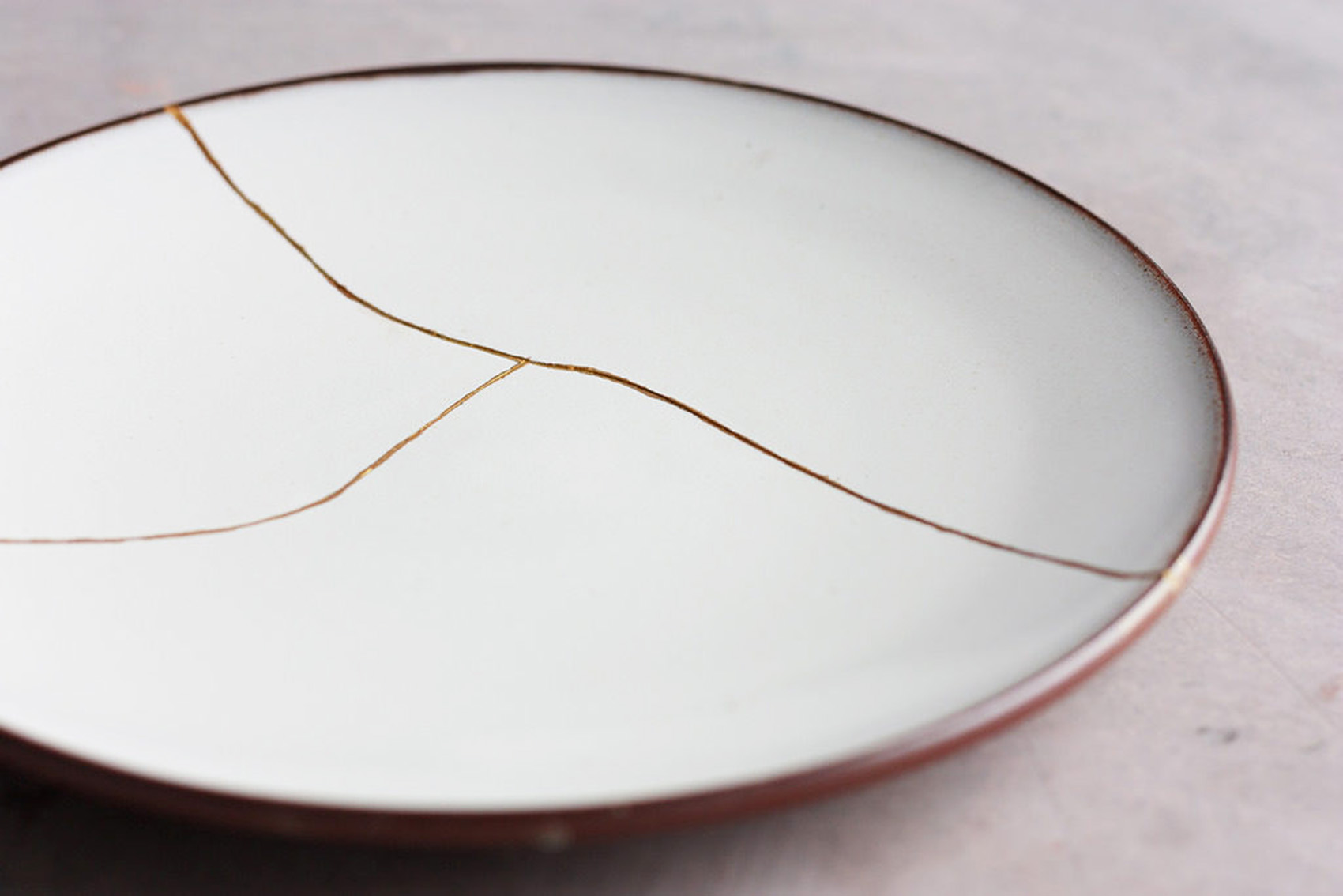
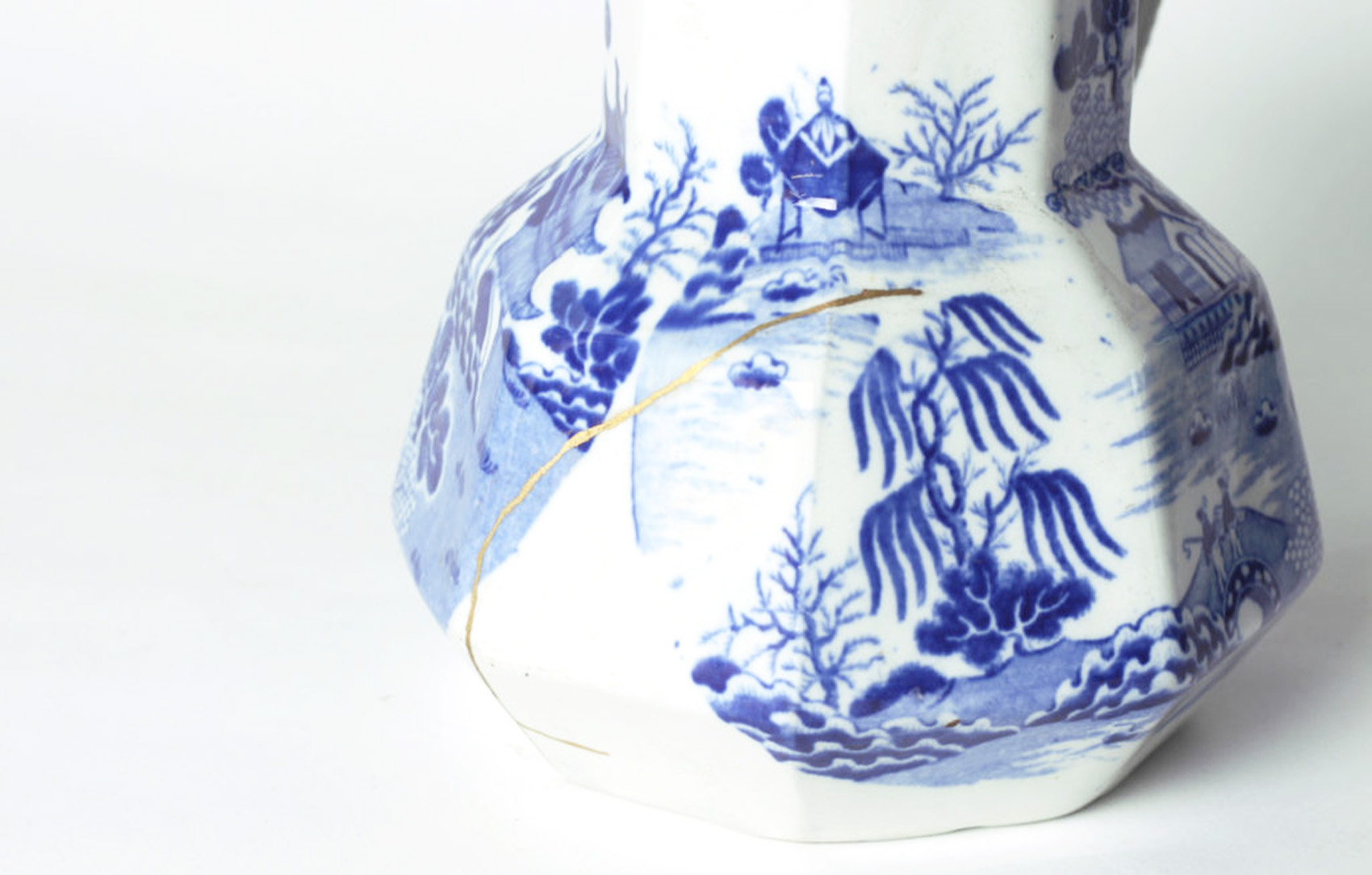
(And PS, if you want to listen to a new song while you admire all the Kintsugi, listen to “Kintsugi” by Gabrielle Aplin. On that note—I’ll share a new playlist soon!)
* Also gotta make note that while the origins of Kintsugi are typically attributed to the Japanese, the art form has been practiced in China and Korea, too. And in modern times, there are artists pushing the boundaries with it and presenting fresh, new takes altogether!







Chanel Miller’s new book cover is based off the Kintsgui art – I just read all about it last week. Such beautiful art!
My husband and I were just talking about this! We’re watching The Man in the High Castle and it talks about this in a couple episodes (one of the episodes is even titled “Kintsugi”).